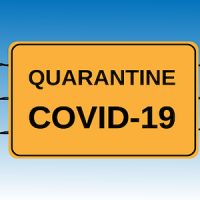COVID-19 is associated with severe disease requiring intensive care in approximately 5% of proven infections. As with similar outbreaks in the past, including SARS, MERS, A(H7N9), and H1N1, critical care continues to be an integral component of the global response to Coronavirus.
You might also like: Coronavirus and the Potential Role of ECMO
Antiviral and/or immunomodulatory therapies have so far proven ineffective for treating patients infected with COVID-19. So how are critical care workers handling the crisis? What are the trends, patient characteristics, and critical care response when dealing with infected patients? Here is a quick overview:
- COVID-19 is primarily infecting older patients with comorbid conditions such as diabetes and cardiac disease.
- Children so far have experienced milder symptoms.
- Pregnant women who have been infected have also had a milder effect.
- The median duration between onset of symptoms and admission to the ICU is around 9 to 10 days.
- Primary reasons for ICU admission have been respiratory support. Two-thirds of patients have met the criteria for ARDS.
- Rapid access to diagnostic testing continues to be a priority as it enables clinicians to take action and implement infection control practices.
- The principal feature of those suffering from serious disease from COVID-10 is the development of ARDS.
- Treatment strategies for such patients include conservative fluid strategies for patients without shock following initial resuscitation, early antibiotics if bacterial co-infection is suspected, lung-protective ventilation, prone positioning, and ECMO for refractory hypoxaemia.
- Septic shock and specific organ dysfunction are also being observed in a significant proportion of patients with COVID-19-related critical illness.
- A large majority of severely affected patients have received targeted therapies, including neuraminidase inhibitors and corticosteroids.
- Mortality among all infected patients remains between 0.5% to 4%, but among those who have to be hospitalised, mortality is around 5 to 15%. Mortality rates are between 22 to 62% among those who become critically ill.
- The exact cause of death remains unknown, but presumed reasons include progressive hypoxia and multiorgan dysfunction.
- Additional critical care strategies are also being implemented including admission of patients with suspected infection to private rooms, use of face masks during assessment and transfer, maintaining a distance of at least 2 m between patients, extra caution when using high-flow nasal oxygen or non-invasive ventilation, and additional airborne precautions including N95 respirators and eye protection.
- Critical care facilities are also ensuring their staff receives updated training in infection prevention and control, including the use of protective equipment.
Source: JAMA
Image Credit: Pixabay
References:
Murthy, S et al. (2020) Care for Critically Ill Patients With COVID-19. JAMA, doi:10.1001/jama.2020.3633
Latest Articles
ECMO, ICU, critically ill, ARDS, ICU ventilator, COVID-19, #Coronavirusoutbreak
What are the trends, patient characteristics, and critical care response when dealing with infected patients? Here is a quick overview:



























